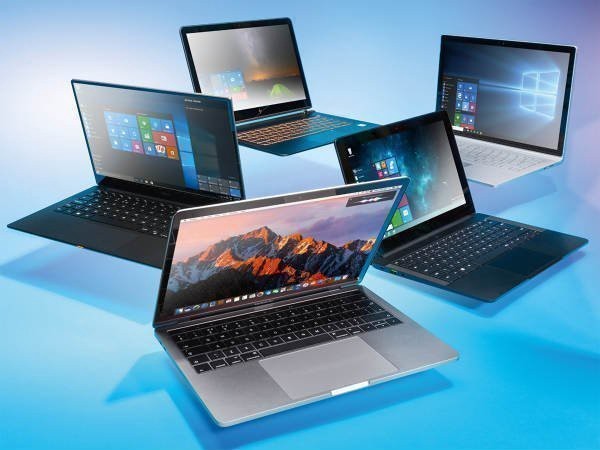How to Decide on a Laptop to Buy

If you don’t know the laptop market is flourishing, you’ll find it out as soon as you embark on your laptop shopping excursion. Hundreds of models from dozens of manufacturers are available. Different sizes, appearances, specifications, operating systems, prices; the list goes on and on. You may feel dizzy just by thinking about this. Fortunately, we’re here to offer a solution.
If you’re interested in learning how to decide on a laptop, you’ve come to the right place. In this article, we’ll go through the essential criteria you need to consider before purchasing a laptop. Additionally, we’ll tell you when the best time is for buying a laptop.
How to Decide on a Laptop
Numerous factors need to be considered when in the market for a new laptop, and they are often connected. Let’s review them:
Use
One of the essential criteria for purchasing a laptop should be the use. Once you establish this, you’ll better understand what characteristics you’re looking for and how much you should spend on it.
Think about what category you belong to:
- General personal use
- Business use
- Student
- Gamer
General personal use typically means you need a laptop for basic functions such as reviewing emails, streaming content, word processing, and listening to music.
Business use means you need to launch specific programs and apps on your laptop. The right laptop depends on your line of business. If you’re using demanding software, you’ll need one that can handle it without any lags.
If you’re a student, you’ll most likely be able to use a laptop with basic functions. The emphasis here is portability, especially if you need to take the laptop to classes, the library, etc.
Those that enjoy playing demanding games need a laptop with impressive specifications. If the laptop isn’t powerful enough, you can’t launch the games, or you’ll experience constant glitches.
Price
When it comes to laptops, you usually get what you pay for. The amount of money you’re willing to spend should match your needs. Fortunately, anyone can find a suitable one because of the wide price range. Generally, laptops can be divided into three categories:
Entry-Level ($600 or Less)
As you might’ve guessed, these laptops are perfect for carrying out essential tasks. They are affordable, but they don’t feature impressive specifications. It’s the ideal option for basic functions so long as you don’t need to launch programs that could strain the device.
Mid-Range ($600 – $1,300)
These laptops offer much better specifications compared to entry-level ones. Most users find the perfect model in this category because many manufacturers aim for this price range.
Those that play light games or use demanding programs should find the perfect laptop in this category.
Premium ($1,300 or More)
Most of the premium laptops nowadays belong to this bracket. With exceptional displays, powerful hardware, breathtaking design, high-quality material – these laptops are close to perfection.
Keep in mind that price isn’t the only indicator of a laptop’s quality and performance. Just because a model costs $1,000 doesn’t mean it’s the right fit for you. If you only need a computer for essential functions or light games, you don’t need to spend thousands of dollars on it. But, if you want to play demanding games, laptops with basic specifications won’t do.

Size
A laptop’s size is typically connected to its portability because larger laptops weigh more and vice versa. Additionally, the size choice also depends on how you plan to use the laptop. For example, if you’re a designer or an artist, you probably want a bigger screen for a more detailed view. If you’re a student, you most likely care more about portability than precision.
Most often, larger laptops are also more powerful. But, this isn’t a universal rule; just because a laptop is smaller doesn’t mean it can’t handle complex tasks.
Here’s more detailed information about popular laptop sizes:
- 10 to 12 inches – These laptops typically weigh around 2.5-3.5 pounds, making them the most portable option. Smaller laptops are ideal for students or anyone that travels a lot but doesn’t need any advanced functions.
- 13 to 14 inches – Laptops that fall into this category offer both portability and functionality. They usually weigh around four pounds, making them easy to carry around, but they can also feature excellent specifications.
- 15 to 16 inches – If you want a larger screen and don’t move your laptop around as much, this is a perfect category, and it’s no surprise 15-inch laptops are the most popular.
- 17 inches or more – These laptops offer a large screen, but they aren’t very portable due to their size. If you want to use the computer only at home or work, this is an excellent choice. However, if you need to take it with you, you should opt for a smaller size.
Operating System
Once you’ve decided on the use, price, and size, you need to think about the preferred operating system. Typically, people tend to stick to the OS they’re familiar with, so if you’ve used Windows in the past, you’re more likely to purchase a laptop with that OS.
Usually, the choice comes down to Windows or Mac. But, one more operating system has become popular in the last few years: ChromeOS. Let’s dive in.
Windows
Windows is the most popular operating system nowadays. Dozens of manufacturers make Windows-based laptops, which only contributes to its popularity.
The price can vary greatly: you can find Windows laptops for several hundred dollars, but you can also spend a few thousand, depending on the brand and model.
Many choose Windows due to its versatility. It’s a standard for many games, programs, and apps, and depending on what you need the laptop for, you’ll likely find Windows more user-friendly.
You can find Windows-based laptops in all kinds of designs and shapes: standard models, touchscreens, models with detachable screens, fold-back screens, etc.
Another advantage of using Windows is that it gets updated bi-yearly.
macOS
Unlike Windows that is widely available across different brands, macOS is only used by Apple. A simple interface and a stylish design are macOS trademarks.
If you have other Apple products, using a laptop with macOS gives you an excellent opportunity to connect them and create your ecosystem. This enables fast connection, easy file transfers, cloud backup, etc. Plus, macOS comes with a variety of useful apps only available for Apple.
Although the macOS interface is user-friendly, those that don’t have any Apple devices often find it incompatible and hard to work with. Many macOS laptops have impressive specifications, but they typically aren’t as powerful as their Windows counterparts. So if you’re looking for top-level performance, macOS laptops may not be the best option.
These laptops also tend to cost more, which is another factor to consider.
ChromeOS
As mentioned, ChromeOS has become a worthy rival for Windows and macOS. Google developed this OS, and it’s based on the Chrome browser.
ChromeOS is featured in Chromebooks, affordable devices similar to laptops with simple hardware and are most commonly used in schools and other educational institutions. The platform supports Android apps, making Chromebooks highly compatible with Android phones and tablets.
Additionally, ChromeOS also supports Linux apps, making it even more versatile.
Hardware
We have finally come to the more technical factors you should consider before buying a laptop. It’s important to remember there isn’t a universal set of specifications rated as “the best.” Again, it all depends on your personal preferences and needs.
We’ll discuss the basic terms you should know and what to aim at:
Central Processing Unit (CPU)
The CPU is often called the laptop’s brain, so you can guess its importance. It executes the necessary instructions that keep the laptop functioning and completing the tasks. If you have a powerful CPU, your laptop will be faster and complete all the tasks without difficulties.
The two most popular CPU manufacturers are Intel and AMD. Both offer three classes of CPUs:
- Budget CPUs – These are perfect for those that want a laptop for carrying out basic tasks. Budget CPUs can handle word processing, internet surfing, video streaming, and other tasks.
- Mid-range CPUs – These processors can handle more demanding tasks such as photo and video editing, playing games, and using other more demanding software.
- High-end CPUs – The most powerful CPUs belong to this category. They can handle anything from word processing to extremely demanding programs, apps, and games.
In most cases, a mid-range CPU can handle most average tasks.
Graphics Processing Unit (GPU)
Another essential factor to consider is the GPU. It generates and renders the images, videos, and all other animations on the screen.
There are two basic types of GPU: integrated and discrete. Integrated GPUs are found inside the CPU and are usually present in more affordable laptops. They have a limited capability and can handle basic tasks. Discrete GPUs are embedded onto the motherboard and are suitable for more complex processing.
Nowadays, you can find laptops with one integrated GPU and an additional discrete one.
Which GPU you need depends on the intended use for the laptop. An integrated GPU will be more than enough if you need a laptop for basic, everyday tasks. However, if you want to use more demanding software or play games, you should buy a laptop with a discrete GPU.
Random Access Memory (RAM)
RAM or system memory stores all active programs, apps, and tasks. RAM acts like the laptop’s short-term memory and enables it to process information quickly. Every app and program you open moves to RAM, and if you run out of it, your laptop will significantly slow down.
The more RAM a laptop has, the faster it will perform tasks. Again, if you’re only performing the basic functions, you don’t need a considerable amount of RAM. Typically, four to eight gigabytes will be just enough. But, if you want to use demanding software, you should aim for 16 GB.
Storage
Many people often confuse RAM with storage, but these are two different types of memory. RAM is used for active apps and programs, while storage represents the amount of space you have available to store files indefinitely.
Any installed program or app needs to be stored somewhere. Hard disk drives (HDDs) were the only storage option for a long time, and they can still be found in more affordable or older laptops models. However, solid-state drives (SSDs) are the new norm nowadays. They represent a much more reliable, faster alternative and are featured in most modern laptops.
Battery
A laptop’s battery can be a relevant factor if you’re often using it outside your home and at locations without accessible power outlets. In that case, you want a laptop that can work for hours without a charger.
Every manufacturer states the battery’s lifespan. If you’re interested in a particular model’s battery, you can look for online reviews from past or current users. Manufacturers tend to “embellish” the durability and make unrealistic claims.
Ports
Although this factor typically isn’t a deal-breaker, you should still consider it. You want to get a laptop with all the connections you might need.
Most laptops have USB-A and USB 3.0 ports. Nowadays, laptops also feature USB Type-C ports. Getting a laptop with that port enables you to connect it to a variety of chargers and ports.
If you plan on connecting your laptop to your phone, external display, or a TV, ensure it has the necessary ports.
When Is the Best Time to Buy a Laptop

Everyone wants to purchase a laptop with impressive specifications without spending a fortune. Unless you urgently need a new laptop, time your purchase to get the best possible deals.
Here are a few suggestions:
- Black Friday – Every year, the Friday after Thanksgiving offers incredible sales on different products, including laptops.
- Cyber Monday – First Monday after Thanksgiving is another excellent day for buying a laptop. It’s often referred to as the extension of Black Friday.
- Back-to-School season – Most laptop brands will have discounts every fall to accommodate students in need of new equipment.
- Several months before a release – Most brands will lower the prices of older laptop generations right before launching a new one. This enables you to purchase a laptop at an excellent price a few months before the release of a new series.



















